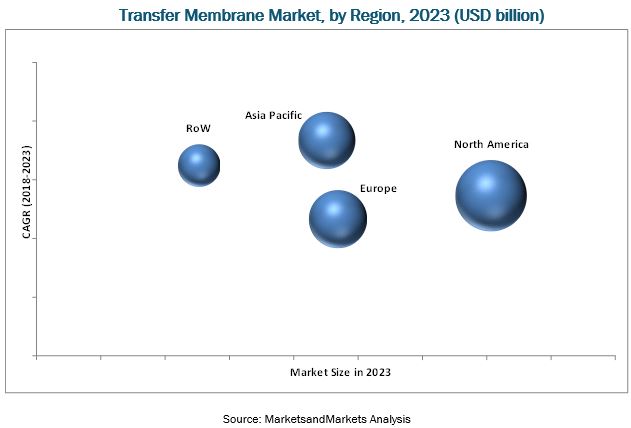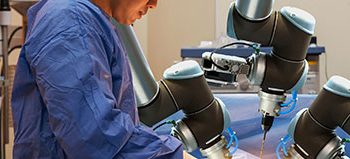Transfer Membrane Market by Type (PVDF, Nitrocellulose, Nylon), Transfer Method (Tank, Semi-dry, Dry), Application (Western, Northern, Southern Blot, Protein Sequencing), End user (Academia, Diagnolab, Pharmaceutical Companies) – Global Forecast to 2023
The global transfer membrane market is expected to reach USD 187.9 million by 2023 from USD 174.8 million in 2018, at a CAGR of 1.5% during the forecast period. Factors such as increasing public and private funding for life science research, the significantly high prevalence of target diseases across the globe, and increasing R&D spending by pharmaceutical and biotechnology companies are expected to drive the growth of market.
The report analyzes the global market by type, transfer method, application, end user, and region.
On the basis of type, the market is divided into nylon membranes, nitrocellulose membranes, and PVDF membranes. In 2018, PVDF membranes are expected to command for the major share of the market. This can be attributed to the advantages of PVDF membranes over its counterparts, such as better protein retention, strength, chemical compatibility, and wide applications in western blotting.
Based on end user, the market is segmented into academic and research institutes, pharmaceutical and biotechnology companies, diagnostic laboratories, and other end users. Among these, the academic and research institutes segment is expected to account for the largest share of the transfer membrane market in 2018, owing it to the rising financial support from private as well as government bodies for life science research in various nations.
This report covers the market data across four major geographies, namely, North America, Europe, Asia Pacific, and the Rest of the World (RoW). North America is expected to account for the largest share of the global transfer membrane market in 2018, followed by Europe. The large share in the North American region is mainly attributed to the presence of leading transfer membrane manufacturers in the region, availability of government and private financial support for life science research, and high target disease prevalence in the region. Factors such as rising proteomic research and growing scale of life science projects funded by government and private bodies, are driving the growth of the Asia Pacific market.

The the availability of alternative technologies and the need of skilled professionals are expected to restrain the growth of the market in the forecast period.
Get free sample: http://bit.ly/2OdO4bZ
As of 2017, Merck KGaA (US) dominates the global transfer membrane market through its broad product portfolio, strong geographical presence, and wide customer base across the globe. Thermo Fisher Scientific (US) held the second leadership position in the global market. Other prominent players in the global market included PerkinElmer (US), , Bio-Rad Laboratories (US), GE Healthcare (US), Pall Coporation (US), Advansta (US), GVS (Italy), Santa Cruz Biotechnology (US), Abcam (UK), ATTO Corporation (Japan), Carl Roth (Germany), Macherey-Nagel (Germany), Azure Biosystems (US), and Axiva Sichem Biotech (India),.


